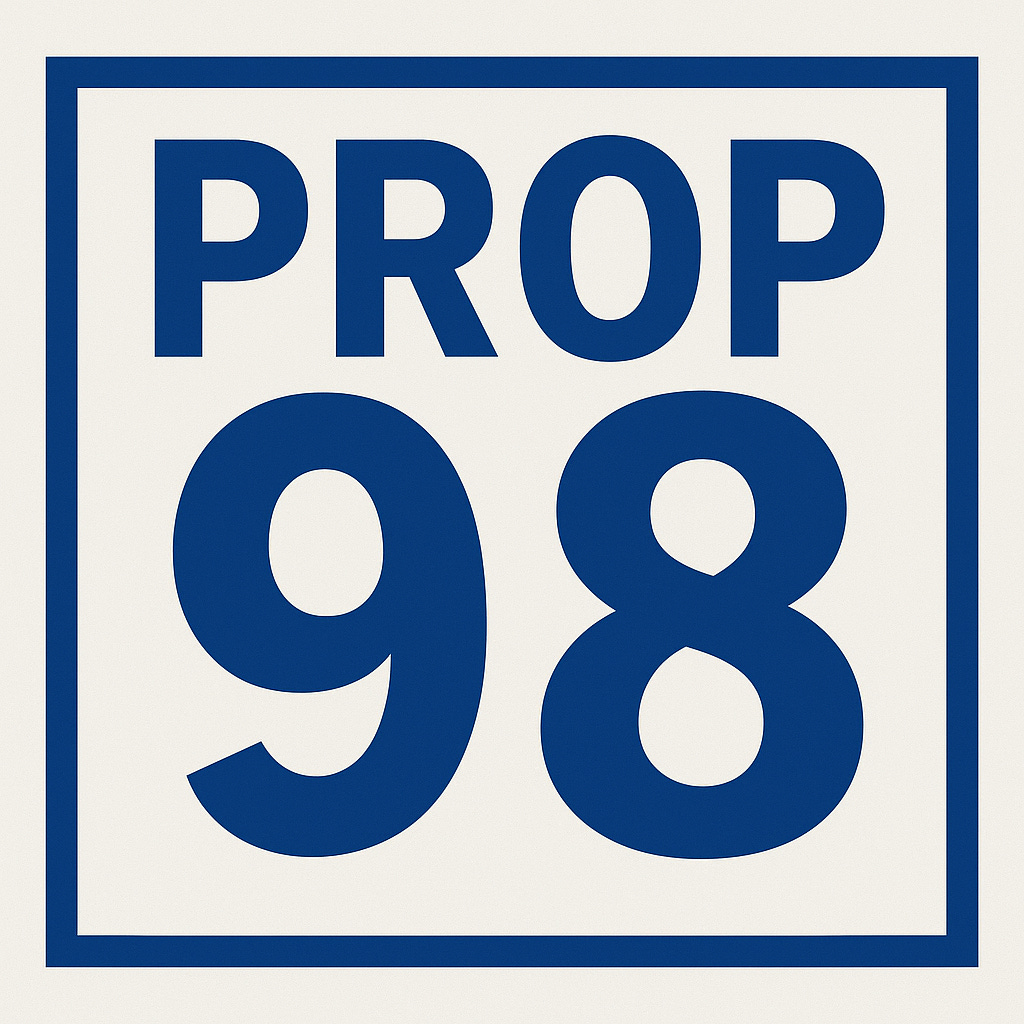Last week we looked at Prop 51, the $9 billion bond that passed in 2016, and the week before that, Prop 2, California’s $10 billion facilities bond approved in 2024. Both focused on infrastructure how the state pays for buildings and upgrades that support student learning. Prop 2 also made a big shift toward more equitable distribution of those funds.
A lot of people I’ve spoken with assume Prop 2 and Prop 51 also cover instruction, class sizes, or day-to-day student programs. They don’t. Bonds are about buildings. Instruction, programs, and daily operations come from Proposition 98, which has been the foundation of California school funding since 1988.
The simplest way to think about it:
Prop 98 pays for people and programs.
Bonds pay for buildings.
Prop 98 keeps California classrooms running by guaranteeing a steady share of the state budget every year. Paired with bond measures like Prop 51 and Prop 2, it shows the full picture of how the state invests in education and funding both the spaces where kids learn and the programs that make learning possible.
How Prop 98 Works
Prop 98 guarantees a minimum level of funding for K–12 schools and community colleges each year. Instead of borrowing money, it’s built into the state budget formula. Key elements include:
Per-student funding: Every student gets a baseline amount that adjusts with enrollment and inflation. (2022–23 fiscal year, California's per-pupil spending was approximately $18,020,)
Supplemental grants: Extra funds go to districts serving more low-income students, English learners, and foster youth.
Growth and cost-of-living adjustments: The formula adapts to population and economic shifts so schools aren’t left behind during tough years.
Why is Prop 98 important to have:
For students: Stable funding ensures consistent access to curriculum, materials, and support services.
For teachers: Predictable budgets help districts retain staff, offer professional development, and sustain programs that make a difference.
Prop 98 distributes funds automatically based on need and enrollment. This makes it a more dependable way to close gaps between higher- and lower-income communities.
Universal Transitional Kindergarten will be funded under Prop 98. I’ll post separately on how those dollars are allocated.
Where Prop 98 Falls Short
Tied to the economy: Because it relies on state tax revenues, especially from high earners and capital gains and funding can fluctuate with the stock market. Even with the funding guarantee, economic downturns still impacts the budget.
Not always enough: Prop 98 sets a minimum, not a maximum. Critics argue it locks California into “minimum effort” funding rather than aiming for national top levels (it keeps schools running, but it doesn’t push them to the highest level)
Complicated formulas: The technical “tests” (Test 1, Test 2, Test 3) make it hard for the public to hold lawmakers accountable. (That makes it hard for the public to see exactly how much money schools should get in a given year)
Limited reserves: The Public School System Stabilization Account helps in downturns, but in big economic hits, schools still face cuts (ex. Great Recession (2008–2012)
(Note: PSSSA passed Prop 2 (2014) not to be confused with Prop 2 (2024 facilities bond): It’s a savings account for public schools to protect them from budget swings. Money is saved when times are good and used when times are tough)
Budget shortfall: California currently faces a multi-billion-dollar gap, and Prop 98 funding has already been reduced.
California Compared to Other States
Better than most: Few states have guarantees as strong as Prop 98. Some, like Vermont, New Mexico, and Utah, have constitutional guarantees or dedicated permanent funds, but not all explicitly secure K–12 funding.
Not the top in dollars: California still spends less per pupil than New York, New Jersey, or Massachusetts. While the guarantee protects schools, it hasn’t pushed the state to the very top in overall investment.
Final Thoughts:
Prop 98 isn’t perfect and it doesn’t promise the most funding or shield schools from every budget hit but it guarantees a baseline that public schools can count on. That predictability matters, especially when the economy is not doing well. In a future post, I’ll break down how Prop 98 compares to educational funding in other states.


